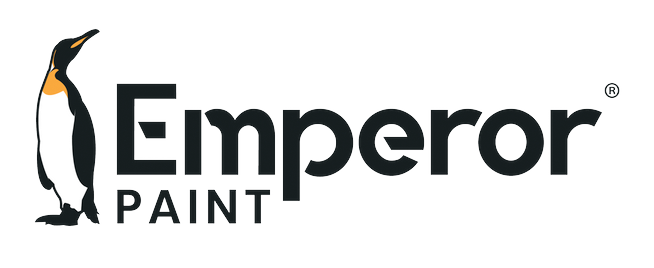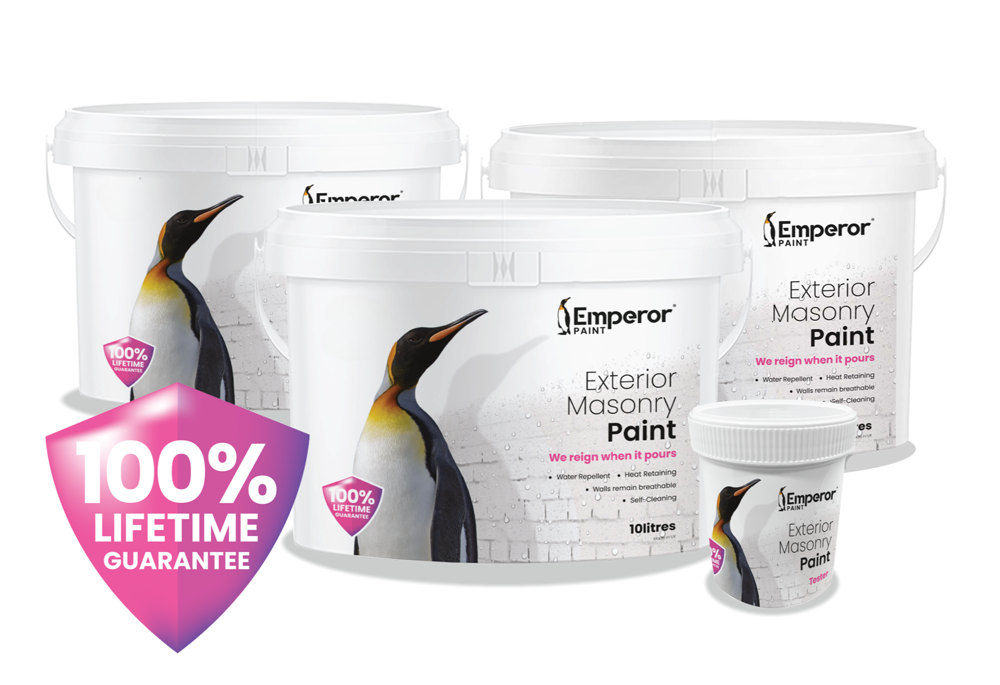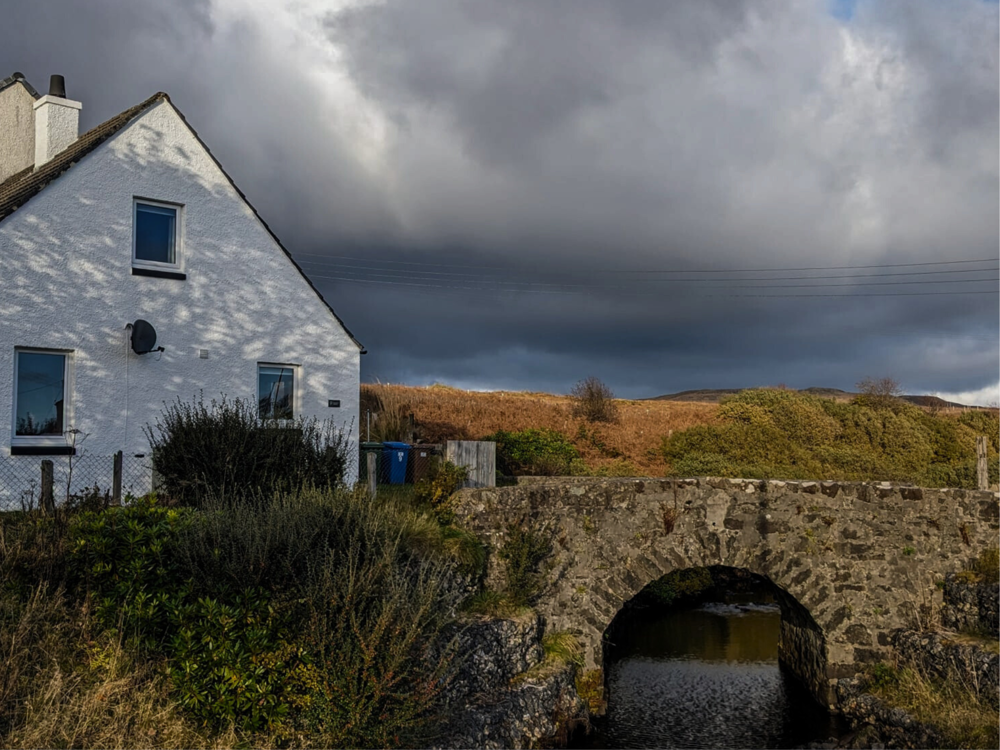
In the UK today our homes must endure a wide variety of weather conditions, which are only increasing in severity with each year. Due to this, now more than ever homeowners are looking for paints that will not only look beautiful but will also protect their home from the elements.
In this guide we are going to explain what is meant by a 'weatherproof masonry paint', how weather protection is measured and everything else you need to know before you start your exterior decorating project.
What Is A Weatherproof Masonry Paint?
Here in the UK our homes must endure rain 156.2 days a year on average, according to the UK Met Office. That means that when painting the outside of our homes, a paint must be able to withstand consistently high levels of moisture almost all year round.
Due to this, exterior paints such as masonry paint are designed with some level of resistance to moisture, although this level can vary from paint to paint.
The term 'weatherproof' is defined as something that is "protected from the bad effects of weather, especially protected from wind or rain by not allowing it to pass through", in the Cambridge dictionary.
The reality is however, while masonry paints often refer to themselves as 'weatherproof', 'weather-resistant' or 'stormproof' to name a few, in reality they often can allow moisture to pass through the paint and soak into exterior walls. While the term 'weatherproof' is commonly used, in practicality it doesn't give you information about just how well that paint protects from water ingress and there is no standard level that a paint must reach to be able to call itself weatherproof.
So, what definitions do exist when it comes to masonry paint? Highly advanced masonry paints use water repellent properties in order to prevent water from soaking into exterior walls, helping to keep them dry and prevent the water from leading to peeling paint.
Water repellent masonry paints can be categorised as either hydrophilic, hydrophobic or super hydrophobic. How a water droplet interacts with a solid surface determines which category it falls under. The higher the contact angle of the bead of water, the higher the hydrophobicity of a surface and the better it can repel water. The surface is known to be hydrophilic when the water contact angle is less than 90°, hydrophobic when the water contact angle is greater than 90° and super hydrophobic when the water contact angle is larger than 150°.
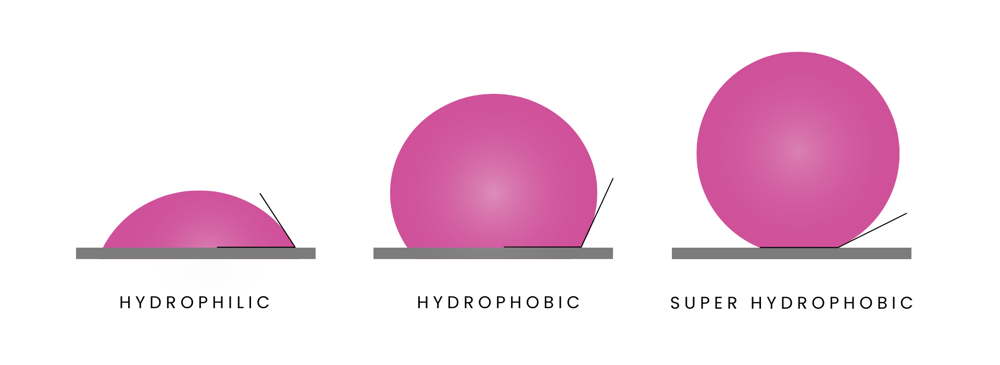
Another way to establish a masonry paint's water resistance is through independent water absorption testing. In this testing, samples of masonry paint are subject to exposure to moisture and then weighed. The moisture content of the sample is then measured and compared against an unweathered sample to establish how much moisture has been absorbed.
The Importance Of Water Resistance In Masonry Paint
Contrary to popular belief, exterior walled surfaces such as render, brick and concrete are porous, meaning they can absorb moisture.
Water from wind-driven rain can hit an external wall and absorb into your home in a process called penetrating damp.
Not only are bare stone, cement, brick and other natural masonry surfaces able to absorb moisture, these surfaces once painted can still remain prone to penetrating damp. This is because standard masonry paints are not highly resistant to moisture, meaning they still absorb moisture over-time.
Crucially, these masonry paints can also have low breathability. Breathability refers to how easily water vapour can pass through a substrate. If a paint isn't highly breathable, it can cause moisture to become trapped underneath the paint, only contributing towards the problems that can be caused by water entering an external wall.
The most common side effects of moisture entering an exterior wall are damp, damage and deterioration.
DAMP
When the moisture enters the external wall of a property it can continue to saturate the surface and make its way into the internal wall of your home in the case of solid wall properties and walls with poorly fitted cavity wall insulation. This transfer of moisture in turn can lead to damp patches, crumbling plaster and peeling wallpaper.
DAMAGE
Damage to external walls is a key indicator and subsequent symptom of water ingress. The damage is caused when water enters an external wall and undergoes what is known as a 'freeze-thaw cycle'.
This happens when the water freezes as temperatures drop, causing the water to expand as it becomes a solid rather than a liquid. This results in movement within the wall that can open-up hairline cracks that allow more water to enter the wall, leading to a cycle of damage.
DETERIORATION
The most common and easiest way to spot water absorption on external walls is general wear and tear. This can arise in many forms, for both unpainted and painted walls. These are generally aesthetic but can indicate higher levels of moisture and the potential for more serious problems.
Moisture is one of the primary causes of masonry paint failure, as once moisture begins to build-up underneath the paint film it eventually causes it to peel and flake.
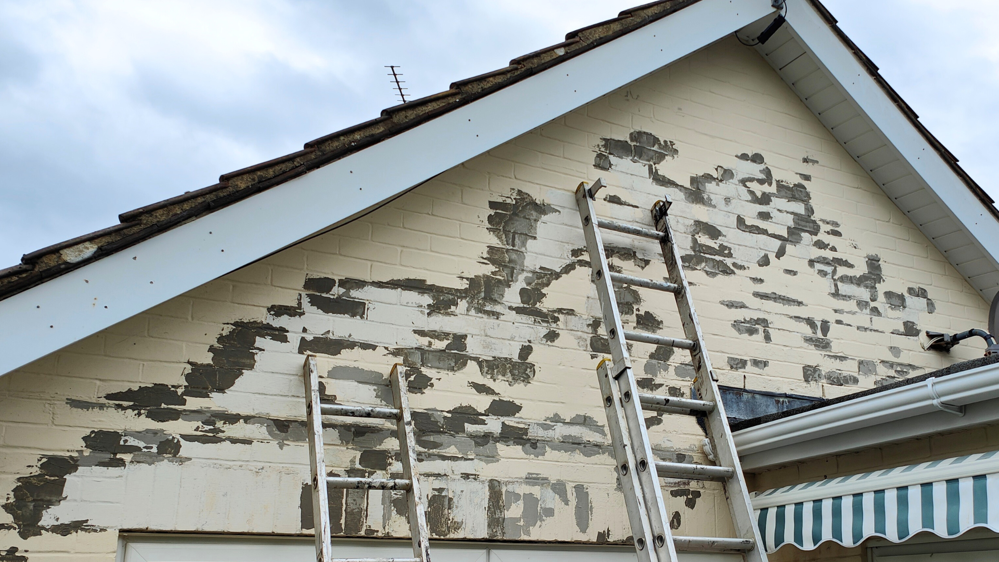
What Paint Prevents Water Absorption?
Recognising the importance of masonry paint being able to reduce water absorption, we developed our cutting-edge nano-technology that creates a super hydrophobic surface on exterior walls.
This nano-technology under a microscope is comprised of millions of tiny pyramids that are naked to the human eye. When the water droplet hits these pyramids, the contact angle is so small that the water cannot attached itself to the surface and simply rolls away.
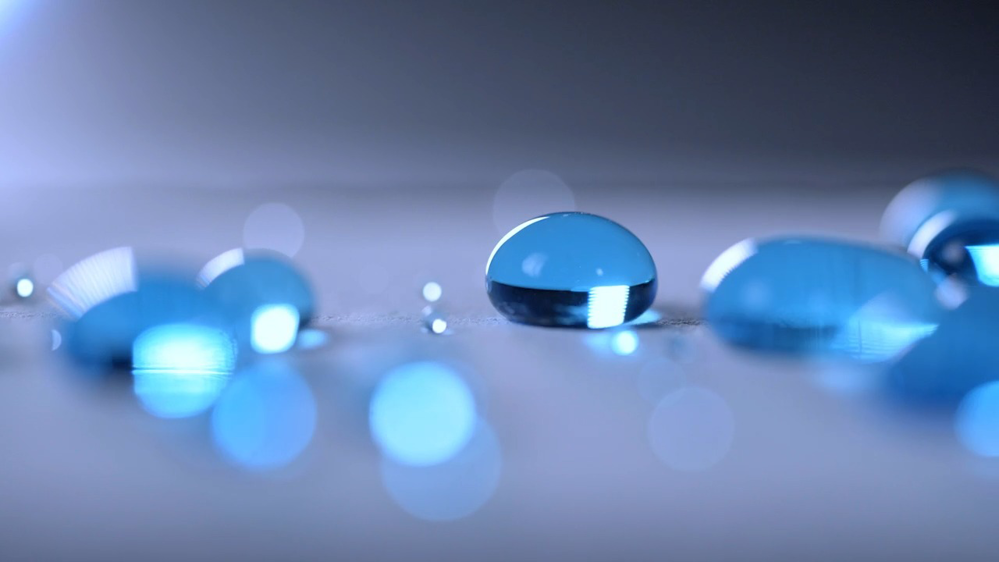
In independent testing conducted by a UKAS accredited laboratory, our Emperor Masonry Paint was found to reduce water absorption by 96% compared to an untreated wall. Importantly, it was also found to be highly breathable, allowing water vapour to naturally pass through the wall.
By helping to prevent water entering the wall while also allowing water to naturally breathe out, our formulation keeps exterior walls dry and prevents the moisture that is so often the cause of masonry paint failure. The same independent testing found that after 25 years of accelerated harsh weather conditions, there were no signs of change in appearance of performance of our formulation, meaning it has extreme durability in all weather conditions without peeling or flaking.
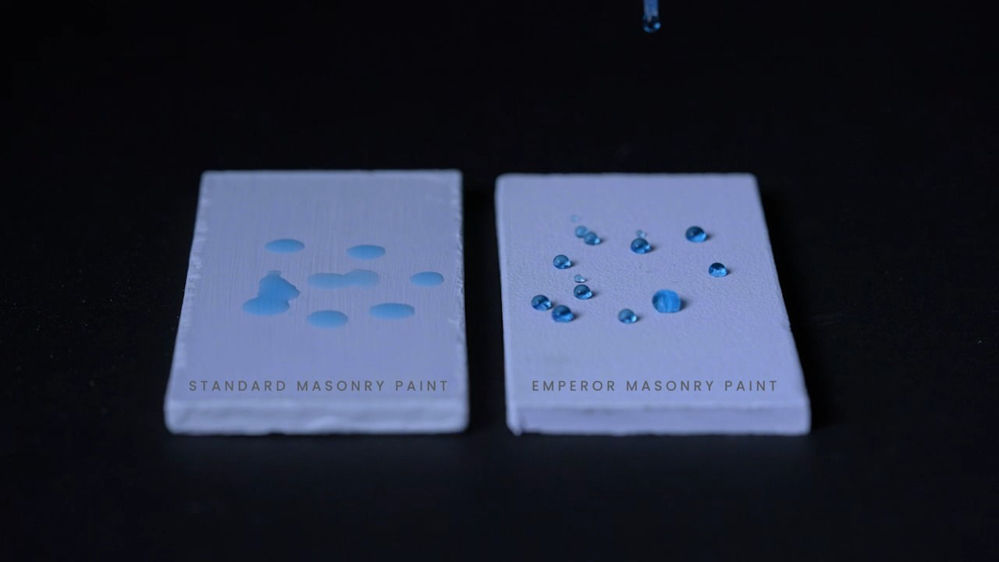
Frequently Asked Questions
Q. WHAT ARE THE OTHERS BENEFITS OF EMPEROR MASONRY PAINT?
By keeping exterior walls dry, our super hydrophobic technology provides a multitude of other benefits;
Heat retaining - Damp content of just 5% can lower the insulating properties of a surface by 50%. This means that when the exterior walls of our homes become saturated with water, it can lead to an increase in heat loss. Independent testing found that a wall painted with Emperor Masonry Paint was 6°C warmer on average compared to an untreated wall when subject to weathering.
Self-cleaning - When exterior walls become damp, they can develop organic growth such as algae and mildew which can become an eye-sore over-time. By keeping exterior walls dry, the moisture required for this organic growth to develop is reduced, helping to reduce the likelihood of it developing. Furthermore, when water is repelled from our super hydrophobic technology, the beads as they roll off the wall gather dirt, ensuring the surface stays clean and free from contamination.
Helps prevent penetrating damp - By reducing water absorption on exterior walls from wind-driven rain, our paint can help prevent penetrating damp and keep your home dry.
Lifetime guarantee - By preventing water building up behind the paint film and by also chemically bonding to the surface itself rather than simply creating a film on exterior walls, our masonry paint has extreme durability. We are so confident it will exceed the 25 year proven performance from independent testing that we offer a lifetime guarantee.
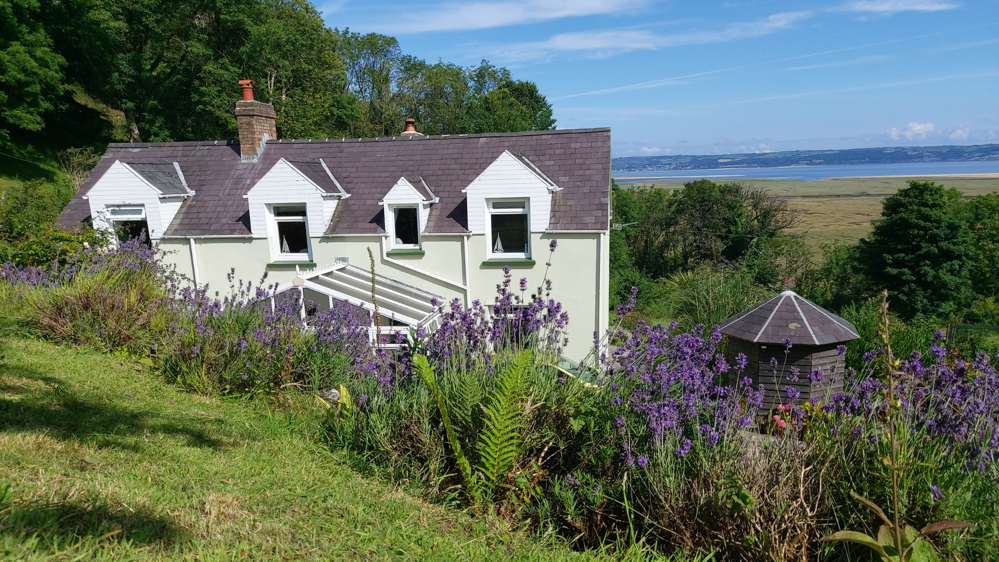
Q. HOW CAN I RESEARCH THE PERFORMANCE OF A MASONRY PAINT?
We always advise homeowners take time to research the masonry paint they are using before starting a project. Unfortunately it can be confusing to establish the exact performance of a masonry paint, especially when it comes to terms such as 'weatherproof' or 'breathable'.
It is always important to find research conducted by an independent, industry recognised body. UKAS is the National Accreditation Body for the United Kingdom that are appointed by the UK Government to assess and accredit organisations that provide services including certification, testing, inspection, calibration, validation and verification. This means that UKAS accredited laboratories are world-leading organisations that provide product testing and reliable, impartial results.
Q. CAN I APPLY A SUPER HYDRPHOBIC PAINT MYSELF?
Emperor Masonry Paint is quick and easy to apply, meaning anyone can transform the outside of their home themselves.
Emperor Masonry Paint is applied like any other paint with a brush or roller. It can be applied directly to any previously painted walls or to bare, unpainted surfaces with the use of our Emperor Exterior Primer. Read our full guide on how to apply Emperor Masonry Paint.
Q. ARE SAMPLES AVAILABLE?
Yes, we offer sample pots of Emperor Masonry Paint for you to see the super hydrophobic effect for yourself. We also offer hand-painted colour charts and colour cards which are ideal for seeing each colour in different position and times of the day.
We hope this guide has answered any questions you may have had regarding weatherproof masonry paint and how you can protect your home from the elements. Want some technical advice or have a question on how Emperor super hydrophobic technology can protect your home? Contact our team of experts by emailing info@emperorpaint.co.uk or by messaging us on Whatsapp.
Ready to start your project? Order your sample of Emperor Masonry Paint and find the perfect masonry paint colour for your home.

